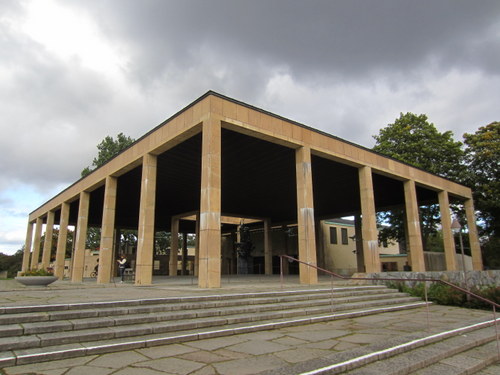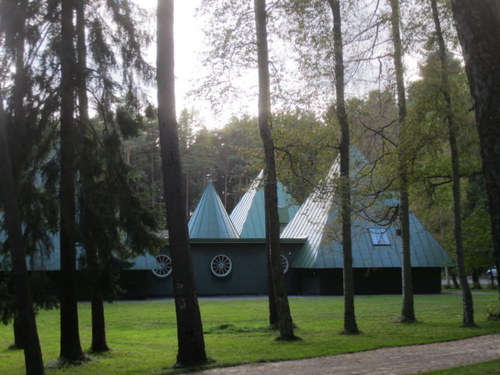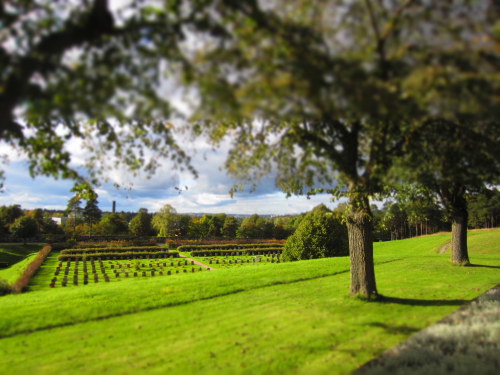Skogskyrkogården is the famous cemetery located in the Enskede, south of central Stockholm. Its design reflects the development of architecture from national romantic style to mature functionalism.
Skogskyrkogården was created after an international competition in 1915. The design of the young architects Gunnar Asplund and Sigurd Lewerentz was selected. Work began in 1917 on land that had been old gravel quarries that were overgrown with pine trees and was completed three years later. The architects’ use of the natural landscape created an extraordinary environment of tranquil beauty that had a profound influence on cemetery design throughout the world.
The crematorium, with its remarkable Faith, Hope, and Holy Cross Chapels was Gunnar Asplund’s final work of architecture, opened shortly before his death in 1940. In 1994, Skogskyrkogården was named a UNESCO World Heritage Site and it is since then a major tourist attraction.

Almhöjden
Built by Lewerentz, the hill emphasises the gentle, romantic character of the landscape.
Visitors reach the top of the hill via a long flight of steps. The higher you get up the steps, the lower each step becomes. This is so that visitors are not tired out by the climb, instead feeling calm when they reach this place of meditation.

Seven Springs Way
At a length of 888 metres, the stunning Seven Springs Way runs straight from the meditation grove to the Chapel of Resurrection. Running along an old boundary line that existed in 1915 when work started on Skogskyrkogården, the path is intended for mourners to follow when attending a funeral service at the Chapel of Resurrection.

Granite Cross
An immense granite cross is the only thing to break up the horizon when visitors come through the main entrance and look out over the rolling, open landscape. The granite cross was designed by Asplund in 1939 and financed by an anonymous donor.

Chapel of Resurrection
Soon after the Woodland Chapel was inaugurated, it became clear that it was too small, so Sigurd Lewerentz was commissioned to design a larger stone chapel in the southern part of Skogskyrkogården. Completed in 1925, the Chapel of Resurrection has the look of a classicist temple.

The Woodland Crematorium
The Woodland Crematorium and its three chapels: Faith, Hope and the Holy Cross. During the 20th century, the pagan practice of cremation started to gain greater acceptance and so, in the mid-1930s, Stockholm’s Cemetery Committee decided to build a crematorium with three chapels. The idea was that Asplund and Lewerentz would work together on the project, but Lewerentz was sidelined and the commission went only to Asplund.

Resurrection by John Lundqvist

Visitors Center
1923 saw the completion of a staff and service building. The building was designed by Gunnar Asplund and has puzzled many people due to its, to say the least, unusual design. It is a playfully shaped wooden building on one level, entirely in green, made up of four square pavilions with very pointed, tent-like roofs clad in metal. The building housed a canteen and changing room for Skogskyrkogården’s staff, divided up so that the women had one side and the men the other.
Skogskyrkogården is connected to a metro station by the same name (see Skogskyrkogården metro station).
See the tour guide for detailed information.





 Posts
Posts